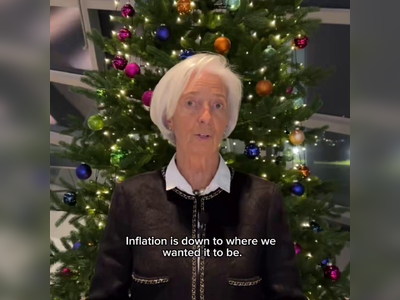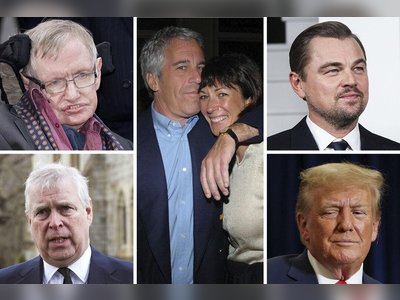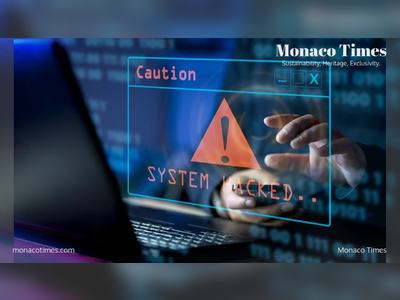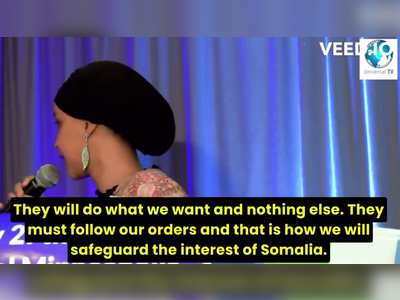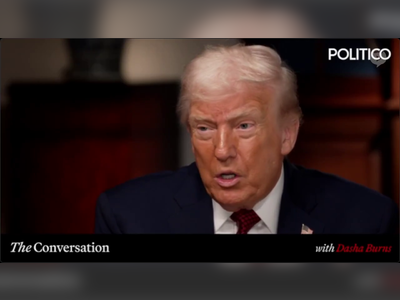Trial of Medical Professionals Begins Over Diego Maradona's Death
Seven healthcare practitioners face potential homicide charges in the high-profile case concerning the late football legend.
The trial of seven healthcare professionals accused of potential homicide in connection to the death of Argentine football legend Diego Maradona commenced on Tuesday in San Isidro, a suburb of Buenos Aires.
The defendants are charged with 'homicide with eventual intent,' which refers to negligence that could foreseeably lead to death, facing prison sentences ranging from 8 to 25 years if convicted.
This legal proceeding, expected to last until mid-July with three court sessions per week, involves the testimonies of approximately 120 witnesses, including medical experts, family members, and associates of Maradona over the years.
Diego Armando Maradona, a globally celebrated football icon, passed away on November 25, 2020, at the age of 60 due to a cardiopulmonary crisis.
He died alone in a private residence in Tigre, on the northern outskirts of Buenos Aires, where he was recovering after neurosurgery for a brain hematoma.
During the preliminary statements, the prosecution asserted that it would present 'solid and unbroken' evidence to demonstrate that within the medical team, 'no one did what they were supposed to do' in what has been characterized as a 'theatre of horror.' This term describes the environment of Maradona's recovery, where he ultimately died.
Outside the court, dozens of fans gathered early in the morning, waving flags and chanting in honor of the football star.
Veronica Ojeda, Maradona's former partner and mother of one of his sons, expressed her gratitude to the supporters while distributing white T-shirts emblazoned with 'Justice for Diego.'
Maradona’s older daughters, Dalma and Gianinna, attended the proceedings without making public statements.
His death prompted national mourning in Argentina, leading to three days of official grief and widespread reactions that blended sorrow, gratitude, and sometimes hysteria, especially around the time of his wake at the presidential palace.
Prosecutor Patricio Ferrari intensified the emotional gravity of the case by showing a photograph of Maradona shortly after his death, indicating the extent of his health decline.
The autopsy revealed that the cause of death was 'acute pulmonary edema secondary to and exacerbated by chronic heart failure.' It was also noted that Maradona suffered from various health issues, including kidney and liver problems, cardiac insufficiency, neurological deterioration, and substance dependencies.
The prosecution described the medical team’s actions as a 'precedent-setting and reckless home hospitalization,' accusing them of a 'series of improvisations, management errors, and oversights.' In addition to the seven individuals on trial, nurse Dahiana Gisela Madrid is set to be tried separately in a different proceeding.
Defense strategies are beginning to take shape, with some accused citing their specific medical roles or deflecting responsibility to others.
One nurse coordinator claimed to have had no direct involvement with Maradona, stating his duties were limited to coordinating care protocols dependent on the physicians involved.
Vadim Mischanchuk, the lawyer for one of the psychiatrists, expressed confidence in achieving an acquittal, attributing the circumstances leading to Maradona's death to unavoidable medical conditions rather than negligence.
Amidst the trial, evidence may also include audio and text messages suggesting a foreknowledge among the medical team regarding Maradona's deteriorating condition.
Testimonies indicate that Maradona resisted medication from nurses.
The case raises pivotal questions about the adequacy of his care, the decisions made regarding his recovery environment, and the involvement of his family in the management of his health.
The public sentiment in Argentina underscores the deep attachment to Maradona, with calls for accountability echoing through the streets, emphasizing the need for clarity regarding the circumstances of his death and the actions of those entrusted with his care.
The defendants are charged with 'homicide with eventual intent,' which refers to negligence that could foreseeably lead to death, facing prison sentences ranging from 8 to 25 years if convicted.
This legal proceeding, expected to last until mid-July with three court sessions per week, involves the testimonies of approximately 120 witnesses, including medical experts, family members, and associates of Maradona over the years.
Diego Armando Maradona, a globally celebrated football icon, passed away on November 25, 2020, at the age of 60 due to a cardiopulmonary crisis.
He died alone in a private residence in Tigre, on the northern outskirts of Buenos Aires, where he was recovering after neurosurgery for a brain hematoma.
During the preliminary statements, the prosecution asserted that it would present 'solid and unbroken' evidence to demonstrate that within the medical team, 'no one did what they were supposed to do' in what has been characterized as a 'theatre of horror.' This term describes the environment of Maradona's recovery, where he ultimately died.
Outside the court, dozens of fans gathered early in the morning, waving flags and chanting in honor of the football star.
Veronica Ojeda, Maradona's former partner and mother of one of his sons, expressed her gratitude to the supporters while distributing white T-shirts emblazoned with 'Justice for Diego.'
Maradona’s older daughters, Dalma and Gianinna, attended the proceedings without making public statements.
His death prompted national mourning in Argentina, leading to three days of official grief and widespread reactions that blended sorrow, gratitude, and sometimes hysteria, especially around the time of his wake at the presidential palace.
Prosecutor Patricio Ferrari intensified the emotional gravity of the case by showing a photograph of Maradona shortly after his death, indicating the extent of his health decline.
The autopsy revealed that the cause of death was 'acute pulmonary edema secondary to and exacerbated by chronic heart failure.' It was also noted that Maradona suffered from various health issues, including kidney and liver problems, cardiac insufficiency, neurological deterioration, and substance dependencies.
The prosecution described the medical team’s actions as a 'precedent-setting and reckless home hospitalization,' accusing them of a 'series of improvisations, management errors, and oversights.' In addition to the seven individuals on trial, nurse Dahiana Gisela Madrid is set to be tried separately in a different proceeding.
Defense strategies are beginning to take shape, with some accused citing their specific medical roles or deflecting responsibility to others.
One nurse coordinator claimed to have had no direct involvement with Maradona, stating his duties were limited to coordinating care protocols dependent on the physicians involved.
Vadim Mischanchuk, the lawyer for one of the psychiatrists, expressed confidence in achieving an acquittal, attributing the circumstances leading to Maradona's death to unavoidable medical conditions rather than negligence.
Amidst the trial, evidence may also include audio and text messages suggesting a foreknowledge among the medical team regarding Maradona's deteriorating condition.
Testimonies indicate that Maradona resisted medication from nurses.
The case raises pivotal questions about the adequacy of his care, the decisions made regarding his recovery environment, and the involvement of his family in the management of his health.
The public sentiment in Argentina underscores the deep attachment to Maradona, with calls for accountability echoing through the streets, emphasizing the need for clarity regarding the circumstances of his death and the actions of those entrusted with his care.
